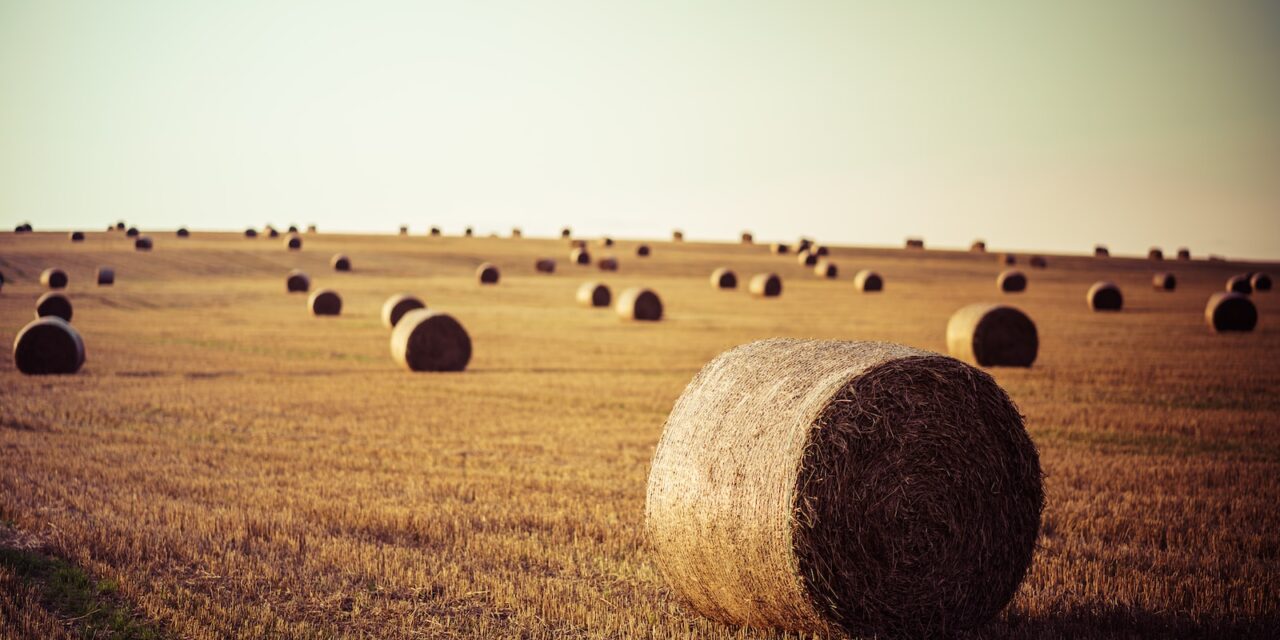Cultivating Connections: Unearthing Agricultural Roots
In the sprawling tapestry of our family history, few threads are as deeply woven into the fabric of our identity as the stories of our agricultural ancestors. These hardworking individuals, with their hands rooted in the soil, tilled the very essence of our existence, sowed the seeds of sustenance that blossomed into lifelines, and nurtured the land that not only provided for generations but also forged the agricultural roots that now anchor our heritage. If you find yourself curious about your farming lineage, embarking on this journey of discovery, tracing the footsteps of those who cultivated our legacy, can be as rewarding as it is enlightening.
Discovering Your Farming Lineage: Where to Begin and What to Look For
Embarking on a quest to uncover your agricultural roots is like embarking on a treasure hunt through time. As with any historical exploration, the journey begins with you. Start by engaging with family elders—these living storytellers hold invaluable insights that can guide your search. Gather anecdotes, memories, and perhaps even faded photographs that offer glimpses into the lives of your farming forebears.
Next, delve into the troves of official documents that have stood the test of time. Census records, for instance, can be a goldmine of information, providing details about your ancestors’ occupation, location, and even the size of their farm. These records offer a snapshot of an era long gone, capturing the essence of daily life in ways that mere words cannot convey.
Navigating Historical Records: Census Data, Land Deeds, and Agricultural Schedules
A well-traveled path to uncovering agricultural roots leads through historical records, which act as windows into the past. Census data, in particular, allows you to peer into the lives of your ancestors with remarkable clarity. Pay close attention to occupation details; finding “farmer,” “agriculturist,” or similar terms can provide a solid foundation for your research.
Land deeds, on the other hand, are akin to deeds of ownership for the earth itself. These documents can offer insights into the geographic area your ancestors inhabited and the size of their land holdings. As you unearth land deeds, a vivid picture of your family’s connection to the land begins to emerge—a connection that often spanned generations.
For those seeking to dig even deeper, agricultural schedules are a hidden gem within census records. These specialized documents shed light on the types of crops grown, the livestock raised, and the machinery used on your family’s farm. This intimate look into their daily toil helps you paint a more vibrant portrait of their lives, adding depth and character to your ancestral narrative.
As you navigate these historical records, remember to embrace the journey itself. Each piece of information you uncover is a step closer to unearthing the stories of those who came before you. In the process, you’re not only cultivating a deeper understanding of your own origins, but you’re also preserving a legacy that connects generations across time—bridging the gap between past, present, and future.
Harvesting the Past: Investigating Farming Practices of Yesteryears
As we trace the footsteps of our agricultural roots, we find ourselves transported to a world where the rhythm of life was synchronized with the seasons, and the art of tilling the soil was a testament to both skill and survival. Unraveling the intricate tapestry of ancestral farming techniques and traditions is an enriching endeavor that unveils not only how they cultivated the land, but also the enduring spirit that infused their labor.
Unraveling Ancestral Farming Techniques and Traditions
In the fields of history, each plow furrow and each seed sown holds a story—a story of ingenuity, hard work, and a profound connection to the earth. Exploring the farming techniques employed by our forebears is like deciphering an ancient code, one that offers insights into their resourcefulness and their harmonious relationship with nature.
From the meticulous rotation of crops to the art of preserving seeds, ancestral farming methods were a blend of wisdom passed down through generations and adaptation to the unique challenges of their time. Uncover the secrets of companion planting that maximized yields and minimized pests, and unearth the practices that sustained the fertility of the soil for years on end.
Tales from the Fields: Stories and Anecdotes of Agricultural Life in Different Eras
The fields have always been a theater for stories—stories of toil under the blazing sun, of triumph in the face of adversity, and of moments of quiet contemplation as the breeze rustles through the crops. These narratives paint a vivid picture of the day-to-day life of our agricultural ancestors, providing a window into their hopes, dreams, and the lessons they imparted.
Picture, if you will, the scene of a family gathered to thresh the harvest, their laughter and camaraderie echoing across the fields. Imagine the thrill of the first mechanized plow, a marvel that transformed the landscape of labor. Envision the communal barn raisings and the shared knowledge that flowed from one generation to the next, shaping the very essence of family and community.
These tales offer more than mere historical anecdotes; they are a bridge between past and present, a reminder of the enduring human spirit that propels us to adapt and thrive. By embracing the stories of agricultural life in different eras, we honor the sweat, determination, and unity that defined our ancestors’ existence.
As we delve into the annals of agricultural history, we find ourselves not only uncovering the practices and traditions that sustained them, but also discovering the threads that bind us to our roots. In these tales from the fields, we unearth the timeless essence of our connection to the land—a connection that transcends generations and remains an indelible part of our identity.
The Fields of Change: Tracing Agricultural Migration and Settlements
In the grand narrative of human history, the story of farming families is not only one of cultivation and sustenance but also of migration and transformation. The tale of how these families traversed landscapes, seeking fertile soils and new horizons, reveals the resilience and adaptability that have defined generations. Tracing their journey allows us to unearth a legacy that shaped both the land and the communities they called home.
Tracking the Journey: How Farming Families Moved and Established New Roots
The path of the plow has often paralleled the path of migration, as farming families embarked on journeys that intertwined their lives with the ebb and flow of geography. The lure of uncharted lands, promising abundant harvests, propelled these intrepid souls to traverse mountains, rivers, and plains in search of a better life.
Their stories are etched in diaries, letters, and oral histories—chronicles of arduous treks, makeshift homes, and the courage to adapt to unfamiliar surroundings. Mapping these migrations offers a tangible connection to our ancestors’ footsteps, revealing the dynamic interplay between family bonds and the pull of unexplored opportunities.
Agrarian Influences on Local Communities: Contributions to Town Development
As the plows turned the soil and crops flourished, something more profound was taking root—a symbiotic relationship between agrarian families and the communities they helped build. Beyond being stewards of the land, these families were architects of local towns and villages, shaping their physical and cultural landscapes.
The establishment of farms often marked the genesis of settlements, as homes, markets, and schools sprang up around the nucleus of agricultural activity. The economic pulse of these communities beat in rhythm with the seasons, with each planting and harvest season fostering a sense of shared purpose and camaraderie.
Beyond the tangible structures, the influence of farming families on local culture was indelible. Festivals celebrating bountiful yields, barn dances echoing with laughter, and the exchange of knowledge among neighbors forged bonds that transcended the plowed fields. The legacy of these families lies not only in the crops they reaped but also in the unity and vitality they breathed into the towns they helped shape.
Tracing the migratory routes of farming families and understanding their impact on local communities offers a multifaceted view of our heritage. It unveils the resilience of the human spirit, the interconnectedness of human lives, and the enduring legacy that springs from the very land they tended. In honoring their journey and contributions, we pay homage to the indomitable thread that binds generations across time and space.
Bountiful Yields: Agricultural Tools and Technology Through Generations
In the annals of agricultural history, the tools and technology employed by farming families stand as silent witnesses to the ever-evolving relationship between humanity and the land. From the rhythmic cadence of horse-drawn plows to the symphony of modern mechanized equipment, the story of agricultural innovation is a testament to human ingenuity and the pursuit of bountiful yields.
Evolution of Farming Tools: From Horse-Drawn Plows to Mechanized Equipment
Picture a vast expanse of fields, where the earth meets the sky, and at its heart, a horse-drawn plow cuts through the soil, turning the earth in preparation for planting. This iconic image harks back to an era when the strength of muscle and the harmony between human and animal were the driving forces behind the cultivation of crops.
As time unfolded, so did the tools. Iron replaced wood, engines superseded hooves, and tractors emerged to lead a new era of efficiency. The clatter of manual labor gave way to the hum of engines, transforming the scale and scope of farming operations. The advent of mechanized equipment revolutionized agriculture, amplifying the capabilities of farming families and heralding an era of increased productivity.
Technological Advancements and Their Impact on Family Farming Enterprises
In the realm of agriculture, technology has woven itself into the very fabric of farming life, ushering in a cascade of innovations that have redefined the landscape. From combine harvesters that sweep through fields like mechanical reapers of abundance to precision agriculture that employs satellite imagery and sensors, technology has become a silent partner in the quest for bountiful yields.
The impact of these advancements transcends the fields themselves. Modern family farming enterprises are not merely shaped by technology; they are empowered by it. Data-driven decision-making optimizes planting, irrigation, and pest management, allowing for a delicate balance between conservation and production. Efficient use of resources has become paramount, ensuring that the legacy of the land endures for future generations.
While the tools have evolved, the spirit remains unyielding—a spirit of stewardship, resilience, and a commitment to feeding the world. The synergy between tradition and innovation has propelled family farming enterprises to new heights, carving a path through time that honors the past while embracing the promise of the future.
As we contemplate the evolution of agricultural tools and technology, we are reminded that each plow, each tractor, each sensor is a chapter in a story that spans generations. It is a story of progress, of challenges surmounted, and of a legacy of nourishment that extends beyond the confines of the field. In embracing these tools, we honor the tireless dedication of farming families and the boundless potential of the earth they nurture.
Sowing Seeds of Success: Examining Economic Aspects of Agricultural Ancestors
Amidst the fertile soil and swaying crops, a deeper narrative of economic endeavor takes root—a narrative that speaks to the livelihoods forged and the fortunes won through the toil of agricultural ancestors. Beyond the labor of love, farming was a cornerstone of economic sustenance, and delving into the financial dimensions of their endeavors offers a window into their resilience and resourcefulness.
Farm as a Livelihood: Exploring Financial Aspects of Ancestral Agricultural Ventures
In the ledger of history, the pages of family farms are inscribed with tales of economic survival and prosperity. An exploration into the financial aspects of ancestral agricultural ventures reveals the delicate dance between income and expenses, profits and losses. Each harvest season, each transaction at market, bore witness to a complex calculus of economic decision-making.
Peering into the past, we discover the diverse revenue streams that sustained farming families. Beyond the sale of crops, income often flowed from dairy products, poultry, and even the byproducts of the land. The art of budgeting and planning was integral, as families navigated the seasons and changing market demands with a shrewd eye on the bottom line.
Agrarian Entrepreneurship: Stories of Family Farms as Thriving Businesses
The family farm was not just a patch of earth—it was a canvas for entrepreneurship, a realm of opportunity where innovation and enterprise flourished. Tales of agrarian entrepreneurship illuminate the narrative of family farms as more than just homesteads; they were thriving businesses that left an indelible mark on communities and economies.
Picture the bustling markets where farm-fresh produce was showcased, or the storefronts where the fruits of labor found their way into the hands of eager customers. These family farms were microcosms of economic ingenuity, where diversification, adaptation, and value-added ventures were the building blocks of success.
From pioneering new crop varieties to experimenting with agricultural techniques, these farming families were not only caretakers of the land but also visionaries who shaped the economic landscape around them. Their stories stand as a testament to the enduring spirit of entrepreneurship that echoed across generations and the profound impact they had on local economies.
As we examine the economic tapestry woven by our agricultural ancestors, we gain a newfound appreciation for their ability to thrive amidst the ebb and flow of economic tides. The farmsteads they nurtured were more than just fields; they were centers of commerce, resilience, and dreams realized. Through their enterprising pursuits, these ancestors sowed not only seeds of sustenance but seeds of success that continue to bear fruit in the present day.
Cultivating Legacy: Honoring Agricultural Roots in Modern Times
The echoes of plows and the whispers of the wind through the fields may have faded, but the legacy of our agricultural ancestors continues to thrive—a legacy that beckons us to preserve their stories, traditions, and wisdom. In the embrace of modernity, we find opportunities to pay homage to their enduring spirit and ensure their legacy flourishes for generations to come.
Carrying Forward Traditions: How to Celebrate and Preserve Farming Heritage Today
Amidst the whirl of the present, there lies a profound beauty in pausing to honor the past. The customs, practices, and traditions that defined our farming ancestors deserve a place of prominence in our lives today. Whether it’s recreating a seasonal festival, reviving a long-forgotten recipe, or tending to a heritage garden, each act is a bridge that spans generations.
By delving into the archives of family records and diaries, we unearth the knowledge that sustained agricultural endeavors for centuries. Documenting these insights in the digital age ensures that the wisdom of our forebears remains accessible to future seekers of knowledge. The act of preservation is a tribute—an acknowledgment that their toil was not in vain and that their teachings are worth cherishing.
Connecting with Living Relatives: Sharing Stories and Insights Across Generations
Just as the roots of a tree nourish its branches, the connections between generations enrich our understanding of who we are and where we come from. The living links to our agricultural roots—our parents, grandparents, and extended family—hold a wealth of stories waiting to be shared. Engaging in meaningful conversations, recording oral histories, and gathering around the table to relive family narratives create a tapestry that spans time.
As we listen to tales of dawn-to-dusk labor and the joys of harvest, we connect with the heartbeats of those who shaped our existence. These conversations are more than just reminiscences; they are keys to unlocking the essence of our heritage and understanding the values that guided our ancestors through life’s seasons.
In the embrace of modern technology, we have platforms to share our findings and celebrate our heritage with a wider audience. Blogs, social media, and family history websites offer spaces where the stories of our agricultural roots can find a home. These digital avenues allow us to connect not only with our immediate kin but also with kindred spirits around the world who share a passion for preserving the past.
As we tread the path of cultivating our legacy, we recognize that honoring our agricultural roots and ancestors is a gift we give to ourselves and to future generations. By carrying forward their traditions and fostering connections, we ensure that the flame of their spirit continues to burn brightly, illuminating the path we tread and inspiring those who follow in our footsteps.
Image Source:
- Photo by Jakob Creutz: instant images





